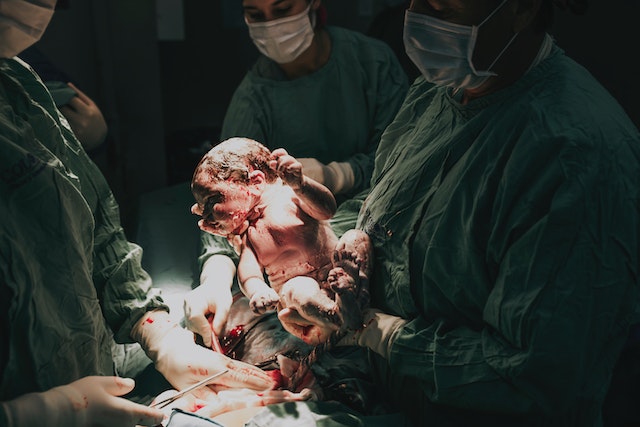Introduction:
A cesarean section, commonly known as a C-section, is a surgical procedure performed to deliver a baby when vaginal birth may pose risks to the mother or the child.
While C-sections are generally safe, like any surgical procedure, they carry the risk of infection.
Being aware of the signs of infection and taking necessary precautions can help ensure a smooth recovery for mothers who undergo a C-section.
In this article, we will discuss the signs of infection after a C-section and the precautions one can take to minimize the risk.
Signs of Infection After a C-Section:
Incision Site Redness and Swelling:
One of the early signs of infection after a C-section is redness and swelling around the incision area.
If you notice that the incision site becomes increasingly tender, warm, or develops a reddish color, it may indicate an infection.
It is important to monitor the incision site closely and report any unusual changes to your healthcare provider.
Persistent Pain or Discomfort:
While some pain or discomfort is normal after a C-section, persistent or worsening pain can be a sign of infection.
If the pain becomes increasingly severe or does not subside with pain medication, it is essential to consult your healthcare provider.
Additionally, if you experience pain during urination or have difficulty passing urine, it may also indicate an infection.
Fever:
A low-grade or high-grade fever following a C-section can be indicative of an infection.
If you notice a persistent fever, chills, or excessive sweating, it is crucial to inform your healthcare provider promptly.
Fever, along with other symptoms, may be a sign of a more serious infection, such as endometritis or wound infection.
Foul Smell or Discharge:
Unusual vaginal discharge with a foul odor is another sign of infection after a C-section.
If you notice an increase in the amount of discharge, a change in color (yellow, green, or gray), or a strong unpleasant smell, it is important to seek medical attention.
These symptoms may indicate an infection in the uterus or the incision site.
Precautions to Minimize the Risk of Infection:
Follow Proper Hygiene Practices: Maintaining good hygiene is crucial to prevent infections.
Clean the incision site gently with mild soap and water, pat it dry, and avoid using any harsh chemicals or perfumed products.
Wash your hands thoroughly before touching the incision site or performing any wound care.
Take Prescribed Medications:
Your healthcare provider may prescribe antibiotics or other medications to prevent or treat infections after a C-section.
It is important to take the prescribed medications as directed, even if you start feeling better, to ensure the complete eradication of any potential infection.
Monitor the Incision Site:
Regularly inspect the incision site for any changes or signs of infection.
Keep an eye out for redness, swelling, discharge, or unusual warmth.
If you notice any concerning signs, promptly report them to your healthcare provider.
Rest and Proper Wound Care:
Adequate rest and proper wound care are essential for a healthy recovery after a C-section.
Follow your healthcare provider’s instructions regarding wound care, such as changing dressings, keeping the incision area dry, and avoiding strenuous activities that may strain the incision.
Conclusion:
While infections after a C-section are relatively rare, it is important to be aware of the signs and take necessary precautions to ensure a smooth recovery.
By closely monitoring the incision site, practicing good hygiene, taking prescribed medications, and seeking timely medical attention, you can reduce the risk of infection and promote healing.
Remember, any concerns or questions should be addressed with yourhealthcare provider to ensure proper care and support throughout your recovery process.


